From Tefta Cami
The first part
Memorie.al / Haxhi Lleshi, former Minister of Internal Affairs in the period 1944-1946 and Chairman of the Presidium of the People’s Assembly of the People’s Socialist Republic of Albania from 1954 to 1982, starting from the period of the War, until he was alive, i.e. for more than half a century, he constantly attacked and denigrated Ahmet Cami, my Cami tribe and me personally, with all the means and with what he had the opportunity.
After the change of the system, that is, after the 90s, I did not think of dealing with Haxhiu, because the problem already belonged to the past. But he left many things written and I had to make a publication with the necessary explanations, which I deposited in the Library of the Central State Archive in Tirana. I did not want to publish it, for the sake of his children, so that they do not carry the burden of their father, but I was forced to respond with this article, after the publication of an archival document in the media, where Haxhi Lleshi’s conversation with the historian was disclosed known, Prof. Kristo Frashëri, developed between them on July 16, 1982.
This is because, in a large part of that conversation, Haxhi Lleshi attacked, attacked, denigrated and defamed my father, Ahmet Cami (‘Martyr of the Fatherland’), the Cami tribe and me personally. Likewise, in that conversation, Haxhi Lleshi has manipulated and falsified not only the history and past of the Lleshi tribe, his family and his own, but also the entire history of the Anti-Fascist National Liberation War of Dibra District, and even beyond of the North of Albania.
Based on these, I considered it reasonable that in this article, I give with facts, arguments and archival documents, the history of the Cami tribe, my father Ahmet Cami and our family, as well as my own personally, always, only on them and giving them answered the accusations of Haxhi Lleshi, as well as the distortions and forgeries he has made for years against the Cami tribe. Let the reader judge for him.
How has Haxhi Lleshi adopted Ahmet Cami’s struggle?
- Haxhi Lleshi has appropriated the fight to Ahmet Cami. In 1944, according to his book (Haxhi), he reported to Enver Hoxha the shares of Ahmet’s gang, as his own. The actions were taken, one at the end of March 1941 and the other on April 2, 1941. While Haxhi Lleshi, came to Albania on April 7, 1941 with Serbian forces, to prevent the attack of Italian fascist forces on Yugoslavia.
In his diary, Ahmet Cami wrote that; Haxhi Lleshi was meeting him for the first time, when he went to his house on April 7, 1941, and that they both belonged to different political currents. While Haxhiu writes that he met Ahmeti in 1939 and that he told him: don’t give up, while according to Haxhiu, Ahmeti told him…! These are all endless lies and deceptions.
Regarding the embezzlement of the war by Haxhi Lleshi, for example, in the case of two shares of Ahmet Cami’s squad in 1941, when he (Haxhiu) reported to Enver Hoxha in 1944, presenting them as shares of his platoon, Enveri says: “Your platoon was before Peza’s platoon. Why was it not written, because of ignorance, or because of envy”?
As a result of those two actions carried out by Ahmet Cami’s squad, on April 5, 1941, the Italians shot 8 people (7 from the Cami tribe), where three people were killed, while the others were able to escape taking advantage of the darkness at night and from which they were unrelated.
Haxhi Lleshi has also denied the participation of Ahmet Cami’s detachment in the creation of the partisan battalion of Dibra, where in fact, Ahmeti organized the creation of the battalion, as well as the participation in the liberation of Zerqani, on August 3, 1943.
In Ahmet’s meeting with Haxhiu on April 7, 1941, Ahmet told him: “The old rivalry does not become a friend. That’s why I don’t cooperate with you and I will fight on my own”. It is about the Serbian forces commanded by Haxhiu.
- Haxhi Lleshi has denied the activity to Ahmet Cami. Although they were cousins, he labeled him with different epithets, to tarnish Ahmet and his family and the entire Cami tribe, calling them traitors. The materials of endless and unimaginable accusations are found in his fund at the Central State Archive in Tirana.
In Haxhi Lleshi’s conversation with the historian Kristo Frashëri, there are several accusations and defamations, as there are many more in his (Haxhi’s) archival collection.
- From the report addressed to the General Staff of the National-Liberation Army, sent by the “Bata” commissar, Niazi Islami and the person in charge of the Forum, Sotir Vullkani, Dibër, 24.X.1943, it is written that: “The Serbian-Montenegro detachment was divided into unit next to every gang in Dibra”.
But according to the assertions of Sulejman Baholli, (former first secretary of the Party Committee of the district of Dibra), in 1944 in Miresh, it appears that the Serbo-Montenegro detachment was stationed alongside the Golloborda detachment and a war was fought between theirs.
- Haxhi Lleshi was injured in the thule by the guard of Ura i Topojani, because he spent the night with 2-3 people and not in fighting. Haxhiu damaged his eye after being kicked by a horse.
- In his memoirs, Haxhi Lleshi manipulates, appropriates and distorts endless events and facts: He says that he came to Albania with 300 dibras. In fact, they were all Serbs. In Dibra, there were only our two nephews and his cousins, Lutfi Lleshi and Ymer Lleshi, who were with Haxhiu.
Haxhi writes that: “In the battles, we won against the Italians”! In fact, the Italian motorized forces were defeated and reached Skopje, the next day, April 8, 1941; this is also confirmed according to Ahmet Cami’s diary. In Ahmet’s diary, military vehicles with Serbian prisoners are described, which were being sent to Shupenza and their treatment was not according to international laws for prisoners of war.
Haxhiu writes that: he translated Ejup Cami in the meeting he (Haxhi Lleshi) had with the battalion headquarters of the Italian “Florence” Division on April 8, 1941. In fact, Haxhiu did not have any meeting, because they were defeated. Ejup Cami was shot on April 5, 1941, i.e., he was not alive and dead he could not translate for Haxhi! In Ahmet’s diary, it is written: “Lut Lleshi came in the morning of April 8 and told me: Haxhiu (Lleshi) and Ymer, (Lleshi) have left for Pogradec”.
Similarly, Haxhi Lleshi did not participate in Faslli Cami’s funeral, because he had left for Pogradec. The family, having just buried him, left, because the Italians were looking for Ahmet, to imprison him, as they imprisoned one after the other until April 27, 1941, 19 men and boys of the Cami tribe, with Ahmet Cami in charge as the organizer.
Haxhiu writes that: he was present at the funeral and that lunch was served, etc. In fact, he (Haxhiu) and his squad were not recognized during the Anti-Fascist National Liberation War in the Golloborda area, but only the anti-fascist and later partisan Golloborda squad, as well as Ahmet Cami, as its commander, was recognized there.
- At that time in the area of Golloborda, there was a group of thieves, who presented themselves as partisans of Golloborda, who were captured and its leader was shot after the liberation of the country.
- Ahmet Cami has been described as a nationalist by Vukmanovic Tempo, Jankovic and Koli Shefski. The conflict with Tempo in Dibër i Madhe was with Ahmet and not with Haxhi Lleshi, as has been published. Based on this fact, that is why Ahmeti was killed by a Serbian-Montenegro detachment, which sided with Ahmeti’s detachment, in the battle of Peshkopia, held on October 20, 1943, and in that battle, he was killed and wounded, there were only from Ahmet Cami’s detachment.
- Until 1948, Ahmet Cami’s family was without frontline soldiers, although we had in three generations, several “Martyrs of the Motherland” who fell in combat, such as our grandfather and great-grandfather during the First World War, and my father and uncle, during World War II.
This thing, i.e. the fact that the Cami family until 1948, was without front triskas, (as were the kulak families and those who were considered as enemies of the people), had come after an order from Koçi Xoxes, that all anti-Slavic families should be hit and be persecuted.
When Haxhi Lleshi was the Minister of Internal Affairs (in the years 1944-1946) he put my uncle in prison, accusing him of possession of weapons without a permit (for Ahmet’s rifle), but it took the intervention of the General Prosecutor of that time, Bedri Spahiu, (who had known Ahmet very well), who immediately released his uncle from prison.
Only after 1948, we were treated as Martyr family. I found this situation (thus these anomalies) in Dibër in 1970, (when I was appointed second secretary of the district Party Committee), where nearly 80% of those families who were declared as kulaks and did not have front triska , they were actually a patriotic family.
In the period 1944-1946, when Haxhi Lleshi was a minister in the Ministry of Internal Affairs, the library of our father, Ahmet, was confiscated. From that time we have the novel “The Count of Monte Cristo” (in French), a French pocket book for the French Enlightenment and an Italian-Albanian dictionary. I suspect that together with the library, Ahmet Cami’s war diary was also taken from us, which we as a family have not been able to find afterwards.
What I wrote above were the reasons why I went to the Central State Archive in Tirana and studied the personal fund of Haxhi Lleshi in search of the war diary of my father, Ahmet Cami. There was also divine justice, since almost all of his fund has materials to prove himself and his family and his father, (Halit Lleshi), who, as is known, was a lieutenant colonel of Belgrade and as an Essadist (part of forces of Esat Pashë Toptan), has led the invading Serbian forces against Albania.
But also, Haxhi Lleshi, has dealt with defamation against Ahmet Cam, his family and all the Cams, as well as personally against me. Haxhiu organized the collection of anonymous statements and letters or with names, fabricated interviews, etc., with the same slander and accusations, etc., which were sent to the Central Committee of PPSh and personally to Enver Hoxha.
In all the letters, Enver Hoxha noted: “The source is known”. All the slanders and accusations against the Cami tribe and against me personally, are summarized in the meeting between Haxhi Lleshi and prof. Kristo Frashërit (for drafting the history of the Anti-Fascist National Liberation War of the people of Dibra), held in the office of Haxhi Lleshi in the Presidium of the People’s Assembly, on July 16, 1982.
- In the last meeting I had with prof. Kristo Frashërin, (some time before he passed away), asked me: “Why did Haxhi Lleshi maintain that hostile and denying attitude towards Ahmet Cami?
I answered prof. Kristos, saying that: “I did not get to know my father, but as I read in his diary, Ahmeti refused to support and cooperate with Haxhiu, when he came with Yugoslav forces on April 7, 1941 “.
The professor told me: “I did not write the history of the LANÇ (National Liberation Anti-Fascist War), of the people of Dibra, only by him. He removed me, because I was a partisan in Dibër, because I did not follow his guidelines and I do not appear in any formation as a partisan”!
When I first met Professor Kristo Frashëri, I was not familiar with Haxhi Lleshi’s fund and with the material of the meeting and conversation of Haxhi Lleshi with prof. Christ. I hadn’t even read the professor’s book about Dibra, which has brought Halit Lleshi, from an Assadist and leader of the Serbian occupying forces in Dibra, to an anti-Assadist and fellow fighter of Elez Isuf and the Cams. Surely, he wrote it under the pressure of the former President.
It is ironic that the father of Haxhi Lleshi has been declared “Martyr of the Motherland” and the remains of Hali Lleshi rest in the Martyrs’ Cemetery in Peshkopi. While the remains of my grandfather, Feta Cami, who has been called: “Legend of the First World War in that province”, there is no grave, because the Serbs buried him and photographed him, to take to Pashiq as evidence that they killed.
The Cams, whom Haxhiu calls enemies, have been fighters for the defense of Albanian lands and enemies of the Serbo-Bulgarian and Nazi-fascist foreign invaders. There are three generations of Martyrs of the Motherland. (Declared “Martyrs of the Motherland” Fetah Shaban Cami and Shaban Mahmut Cami, by decision of the Executive Committee of the district of Dibra, No. 72, on 23.6.1978)
Ahmet Fetah Cami and Faslli Fetah Cami are proclaimed “Martyrs of the Motherland”, by the decision of the Executive Committee of Dibra district No. 50, on 30.6.1972. List of “Martyrs of the Motherland” of Dibër district – (Fund No. 489, Year 1984, File 192, pages 26-43)
- In the last year of the Pedagogical high school in Peshkopi, I was the youth secretary for the entire pedagogical school with 400 students.
By decision of the Bureau of the Party Committee of the district of Dibra No. 22, dated 13.4.1959, Tefta Cami and Fanije Hoxha, graduates of the pedagogical school, decided to continue their higher studies abroad. (A.Q. Dibër, Fund No. 87, File No. 57, Year 1959, page 1)
By decision of the Bureau of the Party Committee of the district of Dibër No. 23, dated 13.4.1959, it was decided that Tefta Cami and Fanije Hoxha be accepted as party candidates. (A.Q. Dibër, Fund No. 87, File No. 57, Year 1959, fl. 11).
- Before the 70s, i.e., when I had no responsibility, Ahmet Cami was proposed twice by the Party Bureau of Dibra district, to be awarded the title “Hero of the People”, but he did not they had given that the Yugoslavs and Haxhi Lleshi had described Ahmet as a nationalist!
Apparently, segments of Haxhi Lleshi still operate. Ahmet Cami was proposed four years ago by OVBSH with General Rrahman Parllakun, as well as by the Municipal Council of Bulqiza, to be declared “Honour of the Nation”, because it turns out that his squad was the first anti-fascist squad in Albania.
But, after the documents that were in the Presidency disappeared three times, former President Ilir Meta gave him the “Golden Eagle Decoration” (with a general dedication, which could be given to everyone), which he did not have to do with Ahmet Cami’s personality and contribution.
From the statements of Haxhi Lleshi, that he was asked and that he took me to continue my studies at the university, it appears that he took me away, in order not to continue my studies abroad. I have returned from Durrës, where we were about to leave by ship to the Soviet Union. The representative of the Ministry of Education – Culture said that: whoever did not come up with the name should come to the Ministry.
And so we did with Fanije Hoxha, where we received an answer to continue our studies at the State University of Tirana, in the branch of Albanian Language and Literature.
But for every three months, during the first year, my aunt’s daughter and I, (Sabireja and her father was a “Martyr of the Motherland”), we received a scholarship. We went to Enver Hoxha’s secretary and he welcomed us. When this phenomenon was repeating itself, my brother Moisi took out our child Martyr’s pension and we calmed down.
As it turns out, Haxhi Lleshi has the ‘white card’ from the APS Central Committee, to be asked about everything about Dibra, even about the pupils and students, who would continue the schools.
I was a teacher distinguished and appreciated by the control teams of the Ministry of Education and Culture and I was also the chairperson of the Language-Literature subject committee for all district teachers of that subject. My class had taken the 100% pass initiative and in my subject I taught, all the students had 100% pass.
A documentary was also made in 1966 about the teacher’s classes with 100% pass rate, by the well-known director Xhanfize Keko, at the “New Albania” Kinostudio.
The documentary is probably in the Archive of the former Kinostudio. According to those results, I became vice-principal and high school principal, editor and deputy-chief editor in the newspaper “Ushtima e Maleve” in the district of Dibra, in charge of the Women’s organization, second secretary of the district Party Committee, first secretary in the region No. 1 in Tirana, Minister of Education and Culture, for 11 years and at the end, director of the High School of the Party, “Vladimir Ilic Lenin” in Tirana, where I taught the subject of Philosophy, since I specialized in that subject.
Haxhi Lleshi has always looked at me with hatred. On July 20, 1973, I came to the meeting of the Party Bureau of the Dibra district and they suddenly analyzed me and expelled me from the party, together with Hekuran Isain, who was the first secretary of the Party Committee in Dibra, with the motivation: for biography bad and other accusations, which are in the archive fund in Dibër and in A.Q.SH. in the Fund of K.Q. of ALP.
In 1971, Haxhi Lleshi threatened me, saying that: “he will blacken the biography of your father and yours”, (that is, mine). I couldn’t imagine that a bad biography was made even for those who died in the War, who sacrificed their lives and shed their blood.
Haxhi Lleshi and the vice president of the Presidium of the People’s Assembly, Shefqet Peçi, have voted against my appointment as Minister of Education and Culture, this is proven according to the fund of the Presidium of the People’s Assembly of Albania, in 1976.
In the context of the oath he had taken, (that is, to blacken my biography), in 1973, Haxhi Lleshi came to the district of Dibra and when he spoke at the rally in Gjorica, where he said that: “All Cams are traitors”, a one of the participants said: “Come on, men, let’s go, because the President is a fool”, and at that moment, a large part of the participants in the rally left, which was very noticeable.
Based on this, the next day at the Zerqan rally, Comrade Haxhi spoke only about Ahmet Cami, as his comrade-in-arms and as a hero. Haxhiu’s brother, Gani Lleshi, (who was a good man), after the Zerqani party rally, told me: “Tefta! This one….he broke up with you in Peshkopi and Gjorica. Today I will fix it and let’s end it like that”. I told him: “Yesterday in Gjorica, I gave the answer to the President, uncle Gani”.
On May 5, 1973, Haxhi Lleshi went to visit my older sister who lived in Tirana. My mother was also there, as her mother-in-law had passed away. And when Haxhiu asked our mother, that; Whose daughter and granddaughter are you in Dibër, she replied: “I am the daughter of Selim Kamberi, who was killed with bayonets by the Serbs, along with two Mixhallars and a Hyzmeqara, and the friend of Ahmet Cami who shed blood. The Serbs were led by your father. Whatever you do with Ahmet, don’t you dare touch my children! Memorie.al
The next issue follows







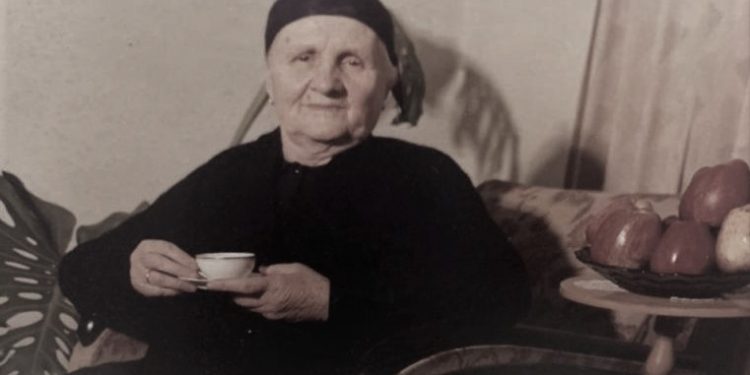
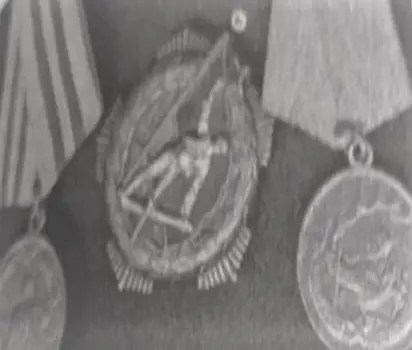
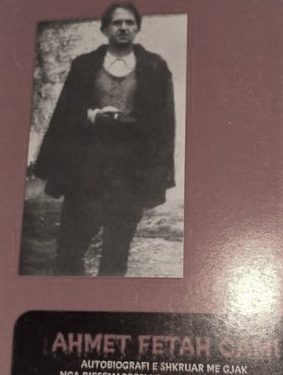
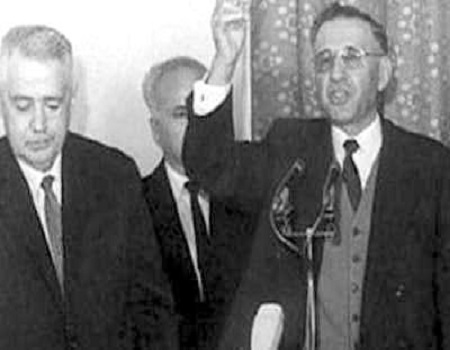
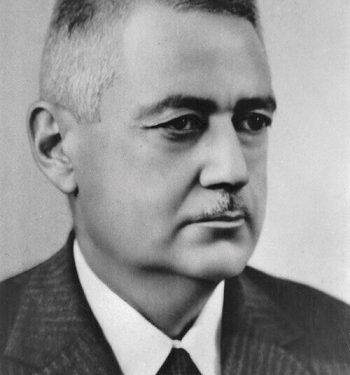
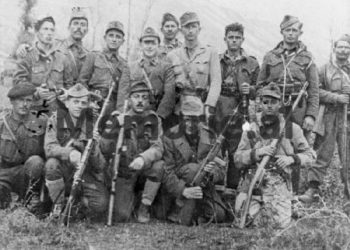
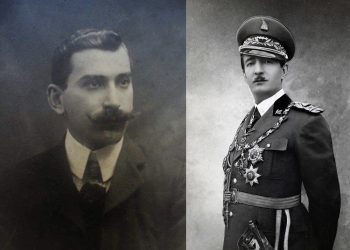
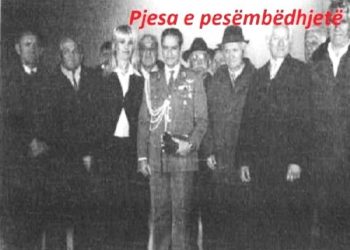
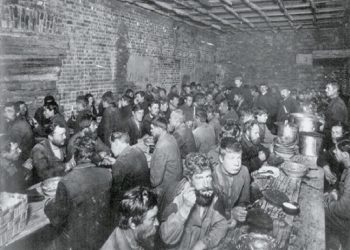
![“When we were standing in the public garden near the Durrës port, one of the ‘sampistët’ (security/police forces) fired his ‘Kalash’ [Kalashnikov rifle] at the head of the boy from Librazhd, and the blood instantly burst out…” / The rare testimony of Sofika Prifti Cara](https://memorie.al/wp-content/uploads/2024/06/admin-ajax-1-2-350x250.jpg)

